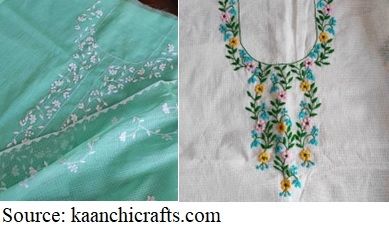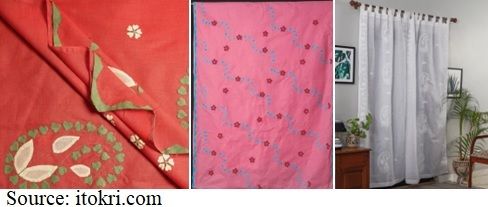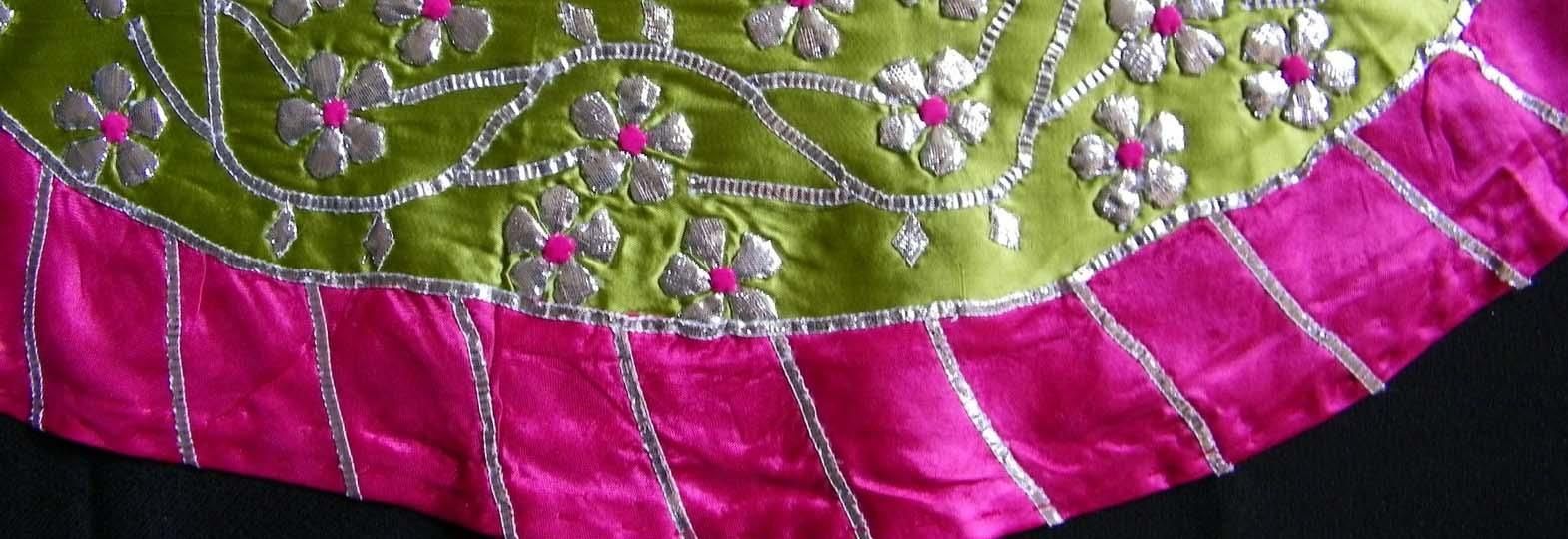The products handcrafted with love not only reflect the exquisite craftsmanship of the Indian artisans but also the richness of the country’s heritage. Each community in India is known to thrive on one or another art form or craft which provides a means of livelihood.
With the passage of time, the crafts have become an integral part of the socio-cultural aspect of the country. Unfortunately, over the years many crafts have reached on the verge of extinction as fast fashion brands are sweeping the market with their readily available cheap clothing options to the masses.
The powerloom fabrics, machine embroidery, and synthetic dyes render the products with indefinite design patterns in innumerable colours at lower prices making the consumers ignore the value of handmade products. This leads to the artisans not getting adequate returns for the materials and skill they put into crafting the products, which eventually results in the artisans losing interest and the will to continue their respective craft.
In Uttar Pradesh, a state which is well known for its rich embroideries like zardozi and chikankari, very few know about Phool Patti work. This craft is a kind of applique work where the fabric is cut into shapes of leaves and flowers and handstitched onto the base materials. As per Farah Usmani, author of the book, Phool Patti Ka Kaam: Reviving a Traditional Indian Applique Embroidery, “This textile decoration style consists of little bits of fine ‘mul’ fabric which are cut by hand and deftly folded and shaped into tiny petals, leaves and other geometrical and floral shapes. These are then embroidered onto the fabric to create a variety of intricate patterns. The entire embroidery is done by hand including the finish of edging and joining of the seams.”
The skill part of the craft is predominantly delicately executed by women in Aligarh and Rampur city of UP. This craft is believed to have originated in the Mughal era to embellish the ‘shalukas’ worn by the begums of nawabs. Earlier, it was used for shamianas, tents, and canopies. Aligarh was well known for producing tents. The canopies are even produced for religious purposes.

The base materials used are mul cotton, cambric cotton, kota cotton etc for doing this graceful applique work. However, nowadays it is being done on chanderi silk as well. At present, the product range includes kurta, dupatta, dress material, saree, curtains etc. There are various labels namely Aairahyd, Desi Pitaara, The Pink Almirah, Manorama India, Sampradaa etc which are selling phul patti work on social media Instagram. Other platforms on which this craft is being sold include The Gunjha Label, Itokri, and Kaanchi Crafts.

The SWOT analysis below will help us understand the current status of phul patti work and its future possibilities.
Strengths:
• Sustainable textiles being the major trend at present, Phool Patti work meets the sustainability criteria as the waste fabric remnants can be artistically used in the form of shapes of petals of flowers and leaves.
• The skill required for cutting, folding, and hemming onto base fabric can be acquired by women easily.
• Women can easily work from home after completing their household chores enabling more women to enter the workforce.
Weaknesses:
• Women are primarily in the creation part whereas men are involved in taking orders or getting work done by women. Because of this, major part of the profit goes to mediators keeping women at a loss.
• This craft is mainly suffering from a lack of design intervention and design diversification and product diversification as per contemporary aesthetics and demand.
Opportunities:
• This less-tapped craft offers various opportunities. Adequate design intervention in the form of motif designing and pattern placements needs to be incorporated into the existing design repertoire without losing its true essence.
• The suitable combination of phool patti work with other crafts like chikankari, gota patti work, hand-painting, tie and dye, mukaish work etc in diverse colour palettes needs to be explored extensively.
• Proper promotion and marketing with the help of branding and storytelling needs to be done on various platforms.
• Product diversification not just in clothing and fashion accessories but also in home decor, lifestyle-based products, corporate gifting, souvenirs etc could ensure its wider reach and penetration in various segments.
Threats
• The major attention from the designers, brands, and consumers has been grabbed by the prominent crafts of UP, i.e., chikankari and zardozi, ignoring phool patti work.
• In the era of easy-to-access clothing mot many are interested in spending extra bucks for the handcrafted applique phool patti work.
Fortunately, there are some associations working for the welfare of phool patti craft artisans presently. Aligarh Self Reliance Alliance (ASRA) for women specialises in the ‘Phool-Patti ka kaam’ (flower and leaf patchwork) in textiles. When ASRA started out in 2019, the main aim was to rescue women from bonded labour and domestic labour. According to the founder of ASRA, women can now directly sell their products to boutiques eliminating the need for middlemen.
Conclusion
Each craft of India deserves due recognition and appreciation from craft enthusiasts, and phool patti work is one of them. This craft needs a major revival and promotion at a large scale in order to increase its popularity. Appropriate efforts of researchers and startup labels could contribute significantly to safeguarding the interest of phool patti artisans in the long run.











Comments